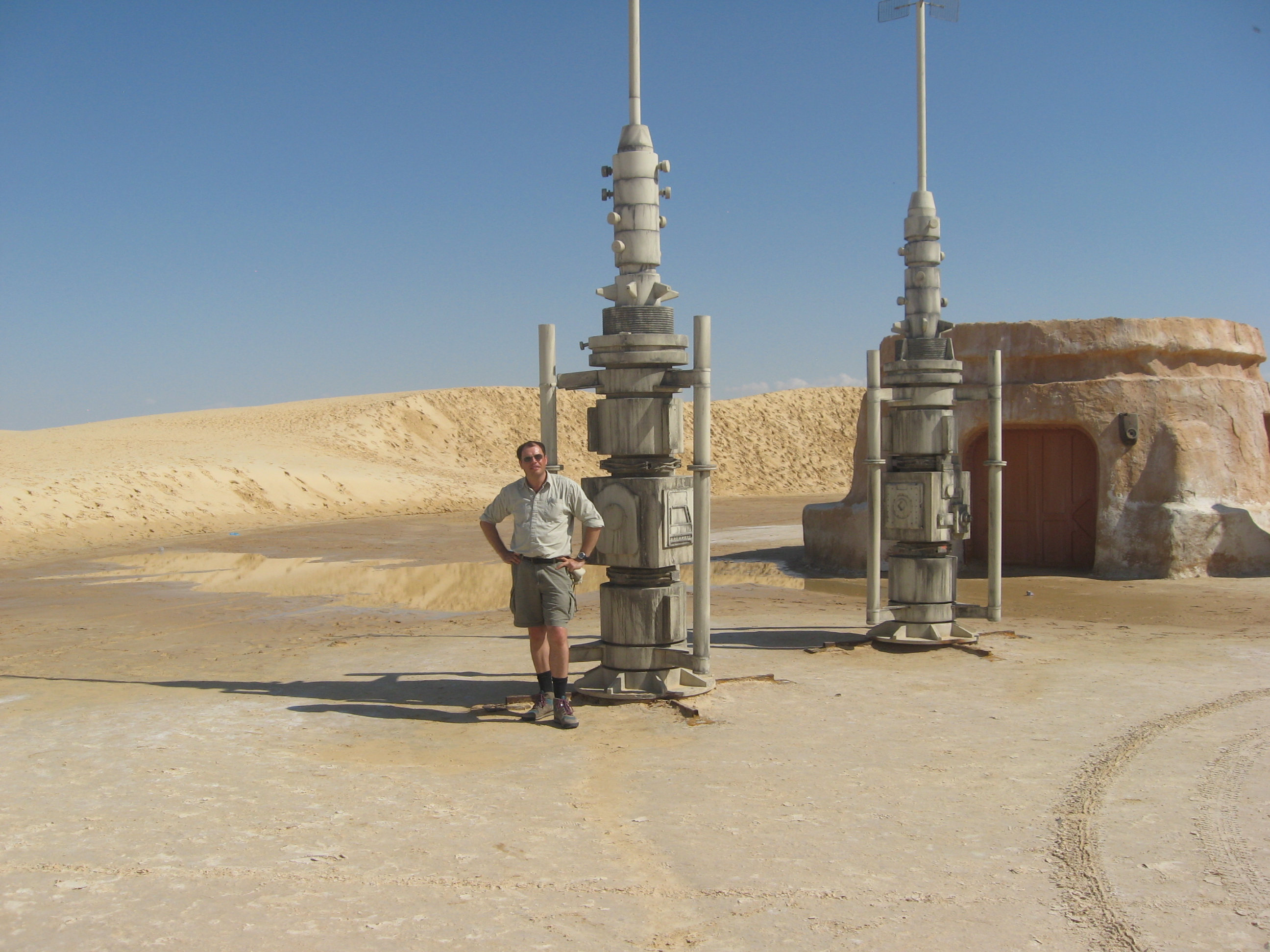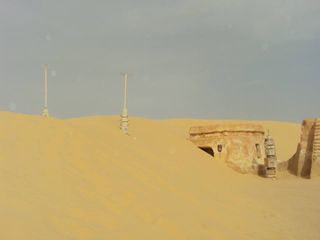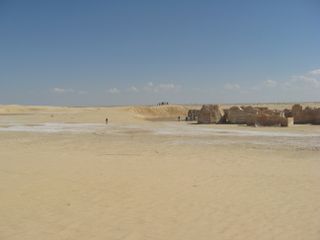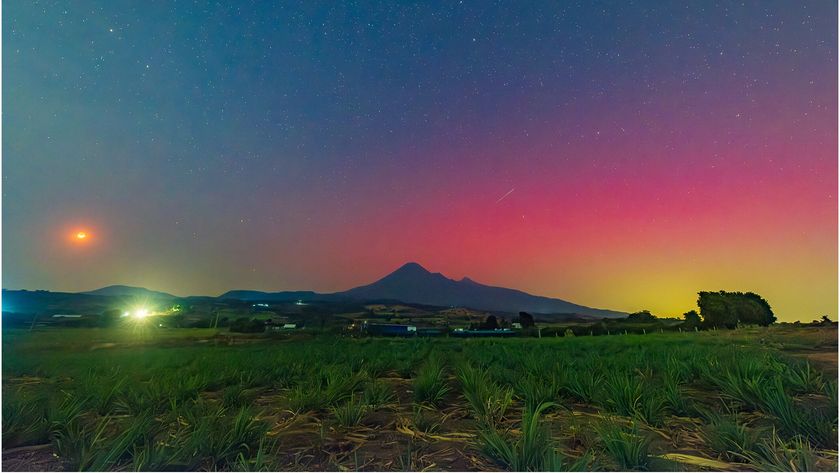'Star Wars' Film Set Feels the Force of Fast-Moving Sand Dune

Call it Revenge of the Sand, or maybe Attack of the Dunes. An encroaching dune is threatening to wipe out several of the buildings used for a "Star Wars" movie set in 1997.
The "Star Wars" location in Tunisia used for "Episode I: The Phantom Menace" is right in the path of a sand front that is advancing at a rate of 50 feet (15 meters) a year. Already the dune has swallowed portions of some structures.
The lead researcher for a new paper studying the dune came upon the "Mos Espa" set by chance, when a sedimentologist organized a tour in Tunisia following a 2009 conference in Italy. [10 Real Alien Worlds That Resemble "Star Wars" Planets]
"We took the opportunity to go on the field trip to see what these [sandy] places are like up close, and by chance they had the "Star Wars" film set in there," Ralph Lorenz, the lead researcher, told SPACE.com.
"It wasn’t something we set out to do, but when I got there I thought this would be a good hook for geomorphology teaching," said Lorenz, who is a planetary scientist at Johns Hopkins University's Applied Physics Lab.
Physical movement markers

Mos Espa is a city located on the fictional world of Tatooine, which orbited two suns. It was also the spot where Anakin Skywalker, the boy hero of Episode I, first did pod racing at the Mos Espa Grand Arena. (The name "Tatooine" has also been used as a nickname for real-life alien planets discovered with two suns.)
Get the Space.com Newsletter
Breaking space news, the latest updates on rocket launches, skywatching events and more!
The set is now a popular tourist attraction, with an estimated 100,000 visitors a year, as it is conveniently located by the oasis town of Tozeur. When looking at the buildings, however, Lorenz also spotted some scientific value.
Dune movement is notoriously hard to measure because it usually takes place on featureless, sandy plains. There are few landmarks to chart a dune's progress. This is true not only on Earth, but also on Mars and Titan – a moon of Saturn that is of particular research interest to Lorenz.

Measuring the encroachment on Mos Espa could provide some "ground truth" for dune research on Earth and on other planets, Lorenz determined. His team used a combination of Google Earth images (which have high-resolution satellite shots of the area), lower-resolution Landsat satellite pictures and occasional visits to track the dune's progression.
Mars and Titan similarities
The movement rate depends principally on two factors: the threshold (based on density, gravity and cohesion) required to cause a grain to move and the wind speed variation – how often the wind exceeds this threshold. The Mos Espa dune speed is about average for other measured dunes on Earth, Lorenz said.
But at 50 feet (15 metres) a year, it would take only a few years to quickly engulf the 330-foot (100-meter) wide set. Lorenz said, anecdotally, that he had heard that Tunisian authorities may trim the dune back before it causes too much damage.
The dune at Mos Espa is a barchan – a sand bank that lies in right angles to the wind direction. Barchans can also occur in other solar system locations.
The Mars Reconnaissance Orbiter's high-res camera has actually tracked barchans marching across the Martian surface, particularly at Nili Patera. There has been a claim of barchan-like forms on Titan, but they are essentially invisible to the NASA Cassini spacecraft during its periodic flybys through the Saturn system.
"Because Titan's dunes are so large, they respond slowly to wind," Lorenz said. "Furthermore, because our resolution with Cassini is modest, we might not be able to detect this."
The study was published in the July 2 edition of Geomorphologyand included researchers from Tunisia, the United States and Italy. Among the researchers was Gian Ori, the sedimentologist who organized the tour that brought Lorenz to Mos Espa for the first time.
Follow Elizabeth Howell @howellspace, or SPACE.com @Spacedotcom. We're also on Facebookand Google+. Original article on SPACE.com.
Join our Space Forums to keep talking space on the latest missions, night sky and more! And if you have a news tip, correction or comment, let us know at: community@space.com.

Space.com is the premier source of space exploration, innovation and astronomy news, chronicling (and celebrating) humanity's ongoing expansion across the final frontier. Originally founded in 1999, Space.com is, and always has been, the passion of writers and editors who are space fans and also trained journalists. Our current news team consists of Editor-in-Chief Tariq Malik; Editor Hanneke Weitering, Senior Space Writer Mike Wall; Senior Writer Meghan Bartels; Senior Writer Chelsea Gohd, Senior Writer Tereza Pultarova and Staff Writer Alexander Cox, focusing on e-commerce. Senior Producer Steve Spaleta oversees our space videos, with Diana Whitcroft as our Social Media Editor.











